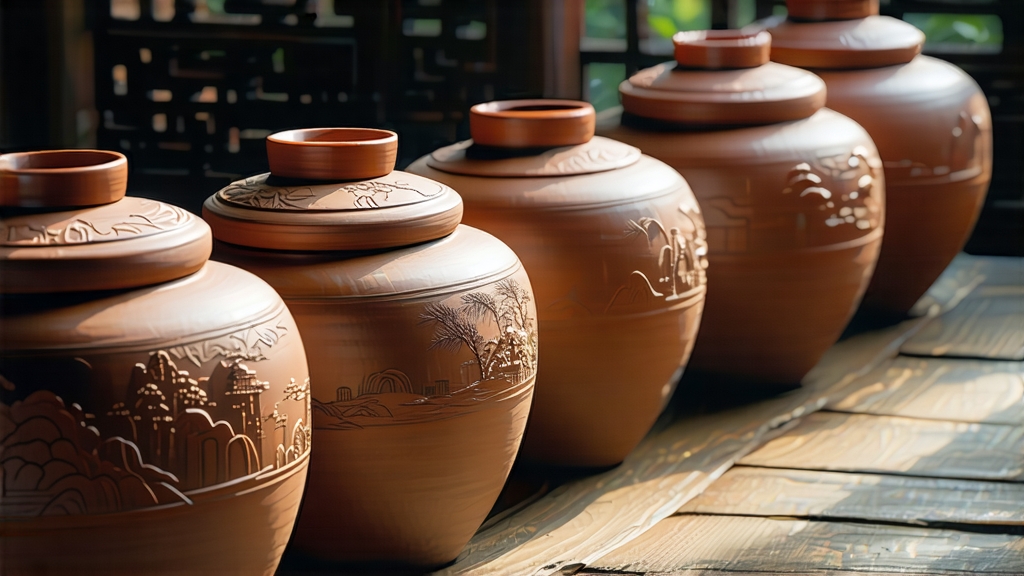
Tucked away in the southern folds of China’s Guangxi Zhuang Autonomous Region, Liu Bao tea has spent four centuries quietly fermenting its way into the hearts of merchants, monks, and modern connoisseurs. To the uninitiated it is merely another dark leaf, yet to those who listen, Liu Bao murmurs stories of river caravans, humid caves, and the patient alchemy of microbes. This article invites the global tea traveler to unpack that narrative—leaf by leaf, sip by sip.
-
From Warhorse to Teacup: A Historical Sketch
During the Qing dynasty, Liu Bao was balloted into history by imperial decree. In 1796 the Jiaqing Emperor placed it on the “Tea Tax Roster,” requiring each county to send a fixed tribute. Coolies shouldered the compressed bricks along the Liujiang River to the port of Wuzhou, where junks hoisted sail for Guangzhou and, eventually, Hong Kong. From there the tea rode the “Ancient Tea-Horse Road” southward, bartered for Burmese jade or Tibetan warhorses. Because the journey took months, the tea arrived naturally humidified and half-fermented; drinkers discovered that the deeper the color, the smoother the taste, and Liu Bao’s reputation for “settling the stomach after greasy yak butter” was born. By the 1930s Guangxi warehouses were purposefully re-creating those tropical conditions, giving rise to the first commercial wet-pile fermentations—decades before the technique was popularized in Yunnan’s shou Pu-erh. -
Terroir: Where Minerals Meet Monsoon
Liu Bao township lies at 23° N, cupped by the Dayao Mountains whose granite soils bleed potassium into the groundwater. The cultivar of choice is the medium-leaf “Guangxi Da Ye Zhong,” a close cousin of Yunnan’s big-leaf assamica yet genetically distinct after centuries of isolation. Monsoon clouds arriving from the Beibu Gulf collide with the mountains, locking the valleys in 85 % relative humidity for almost two hundred days a year. Locals joke that the tea is “half-grown, half-weathered,” because even on the bush the leaves inhale spores that will later orchestrate fermentation. -
Crafting the Darkness: A Step-by-Step Journey
a) Plucking: Only the 3rd to 5th leaves are taken—mature enough to withstand the heavy piling that follows.
b) Solar Withering: Leaves are spread on split-bamboo trays for three hours, long enough to lose the grassy edge but short enough to retain internal moisture.
c) Kill-Green: A 260 °C wok roast lasting 4 minutes deactivates polyphenol oxidase, yet the thick leaves escape complete denaturation, leaving latent enzymes for later microbial dialogue.
d) Rolling: Dual-direction rolling for 30 minutes ruptures 60 % of cell walls, releasing sticky sugars that will feed the fungi.
e) Sun-Drying: Unlike Pu-erh’s courtyard drying, Liu Bao is dried on the second-floor balconies of stilt houses, allowing smoke from the ground-level kitchen to drift upward. This accidental smoke contact gifts a faint pinewood note that connoisseurs prize.
f) Wet-Pile Fermentation: The hallmark step. Leaves are sprayed to 35 % moisture, heaped 70 cm high, and covered with jute sacks. Internal temperature climbs to 55 °C within 36 hours; every 48 hours the pile is turned, aerating the core and re-wetting the surface. After 25–35 days the leaf color turns chestnut; amino acids drop by half while theaflavins convert to theabrownins, yielding the characteristic “red soup, brown leaf.”
g) Compression & Basket Aging: Traditionally the tea is steamed and packed into 40 kg bamboo baskets lined with untreated banana leaf. The bamboo breathes, permitting micro-oxidation while repelling insects with its natural coumarin scent. Warehouses in Wuzhou maintain 28 °C and 80 % RH; here Liu Bao naps for years, sometimes decades, growing mellower and more medicinal. -
The Flavor Lexicon: A Translator’s Dilemma
Beginners often reduce Liu Bao to “earthy,” but the initiated detect layers:
Top note: